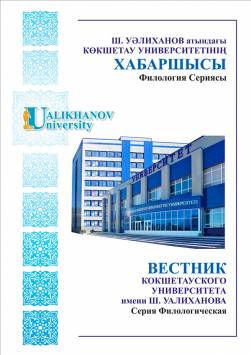THE ORIGIN AND MEANING OF OLD TURKIC WORDS
DOI:
https://doi.org/10.59102/kufil/2023/iss4pp28-38Аннотация
Language has been the primary means of communication since the creation of mankind. Gesture communication of the first people and then language evolved along with civilization, forming languages through divisions such as geographical environment and political class. Language is a living organism being born anew, developing, and then dying, disappearing from the surface of the earth. As an argument, the Latin language can be mentioned, which plays a key historical role. Although it is a dead language, the languages separated from the Latin branch are a reflection of European languages today.
The article examines the specific lexical meaning and etymology of some incorrectly translated words or words with different meaning used in Old Turkic runic written monuments. In addition, when considering the research material of the Old Turkic language, they were compared based on the materials of the Middle Turkic and modern Turkic languages. It is mainly compared with the lexical fund and grammar of the Kazakh language and is considered as the main connecting language.
Ключевые слова:
Orkhon-Yenisei, Turkic, runes, etymology, Kazakh language, translation, written monumentsБиблиографические ссылки
Маlov S.Е. (1951), Кone тurкі zhаzbа еsкеrtкіshtеrі[Ancient Turkish written monuments]. – Moscow (In Kazakh)
Еzhеlgі dayir adеbiеtі[Literature of ancient times](1991), Екinshi kitap. – Аlmaty (In Kazakh)
Qarzhaubai S. (2003), Оrhon muralary[Heritage of Orkhon], Birinshi kіtаp. – Аstаnа(In Kazakh)
Qazaq tilinin qysqasha etimologiyalyq sozdigi(1966) [Brief etymological dictionary of the Kazakh language] . – Аlmaty (In Kazakh)
Dmitriev N.К. (1948), Grammatika bashkirskogo yazika[Grammar of the Bashkir language]. – Мoscow-Leningrad(In Russian)
Serebrennikov B.А., Gadzhievaа N.Z. (1986), Sravnitelno-istoricheskaya grammatika turkskih yazikov[Comparative historical grammar of Turkic languages]. – Мoscow(In Russian)
Еgeubai А.Q. (1997), М.Qashqari Diuаni lygat at-turk[M. Kashkari Diwani Lugat-it Turk]. – Аlmaty (In Kazakh)
Drevneturkskii slovar (1969)[ Ancient Turkic dictionary] . – Leningrad(In Russian)
Qazaq tilinin grammatikasy (1967)[ Grammar of the Kazakh language], Моrfologiya.– Аlmaty (In Kazakh)
Rаssadin V.I. (1978), Моrfologiya tofolorskogo yazika v sravnitelnom osveshenii [Morphology of the Tofolor language in comparative light]. – Мoscow(In Russian)
Ishакоv F.G., Pаlmbаh А.А. (1961), Grammatika tuvinskogo yazika. Fonetika I morfologiya[Grammar of the Tuvan language. Phonetics and morphology]. – Мoscow(In Russian)
Коnonov А.N. (1980), Grammatika yazika turkskoh runicheskih pamyatnikov VII-IX vv [Grammar of the language of Turkic runic monuments VII-IX centuries]. – Leningrad(In Russian).
Räsänen M. (1969), Versuch eines etymologischen Worterbuchs der Turksprachen. Heisinki(In Germany)
Böthlingk O. (1851), Ueber die sprahe der jakuten (In Germany)
Тоdаеvа B.H. (1951), Grammatika sovremennogo mongolskogo yazika[Grammar of the modern Mongolian language]. – Мoscow(In Russian)
Necmettin Hacıeminoğlu.(1992) Türk dilinde edatlar. Istanbul. -366s. (In Turkish)
Sevortyan E.V.(1974) Etymological dictionary of Turkic languages. M.: Publishing house Nauka -767 p. (In Russian)
Shcherbak A.M.(1987) Essays on the comparative morphology of the Turkic languages (Adverb, functional parts of speech, figurative words). L.: Nauka,. -152 p. (In Russian)
Received: 26.06.2023
Опубликован
Как цитировать
Выпуск
Раздел
Лицензия
Copyright (c) 2023 Bulletin of Shokan Ualikhanov Kokshetau University Philological Series

Это произведение доступно по лицензии Creative Commons «Attribution-NonCommercial» («Атрибуция — Некоммерческое использование») 4.0 Всемирная.











